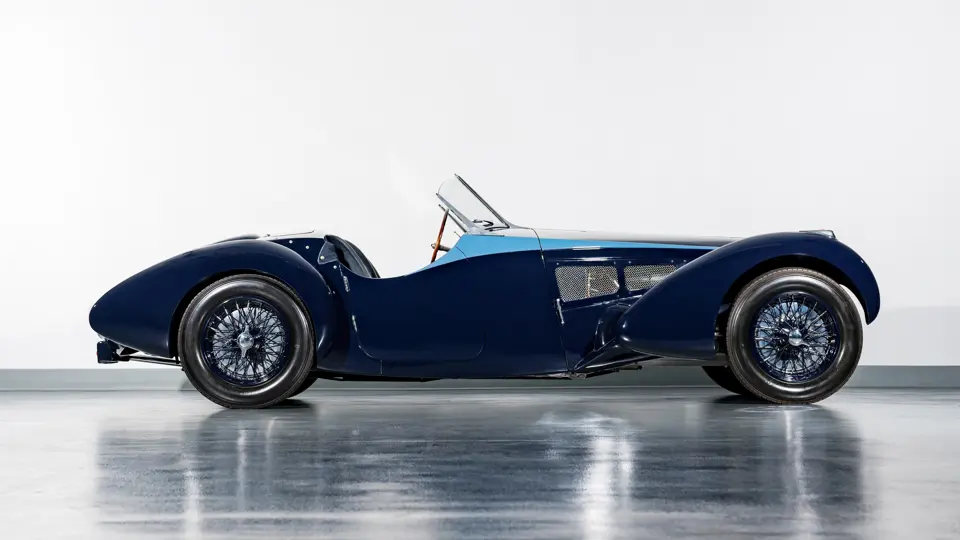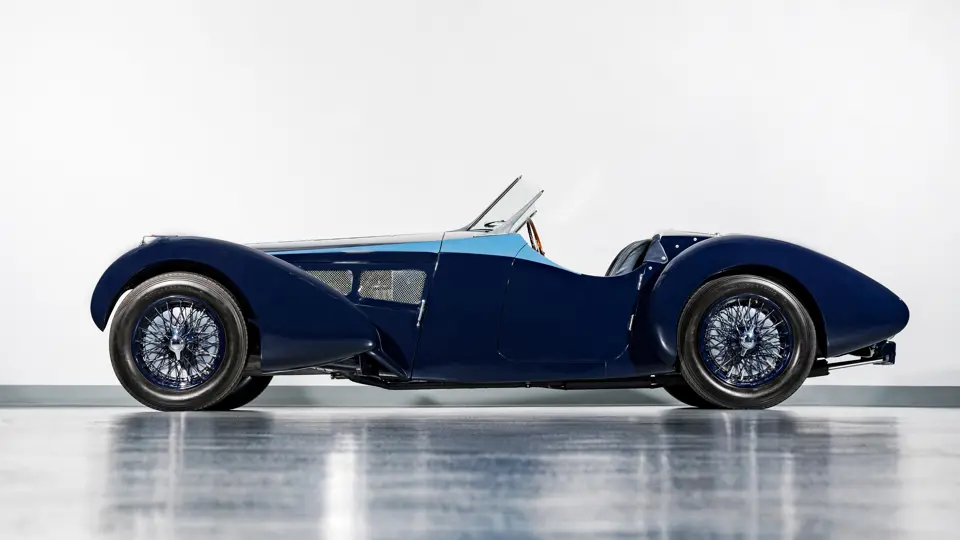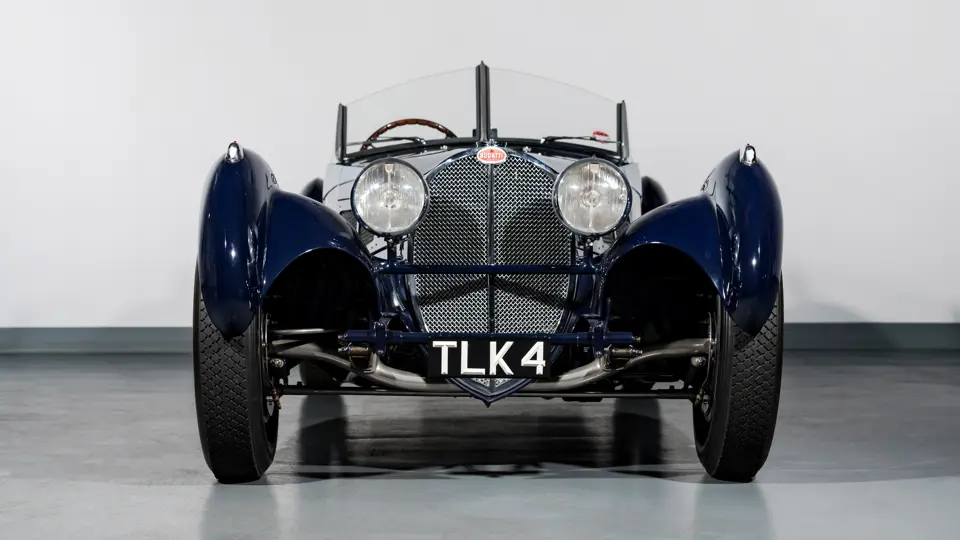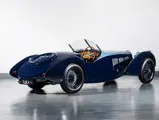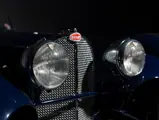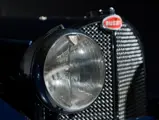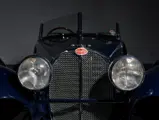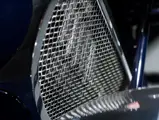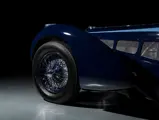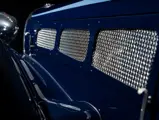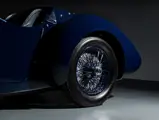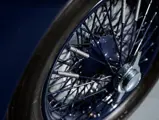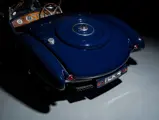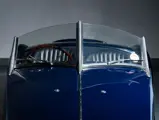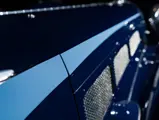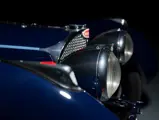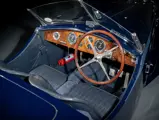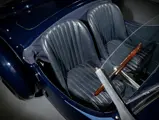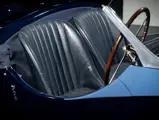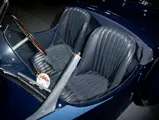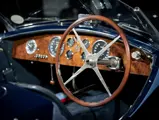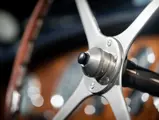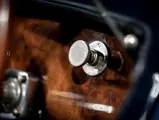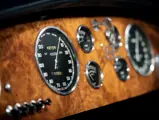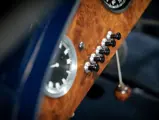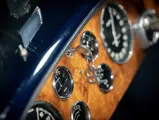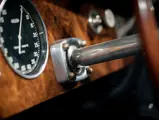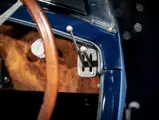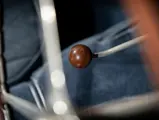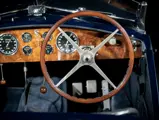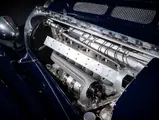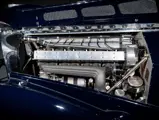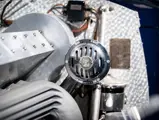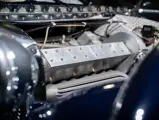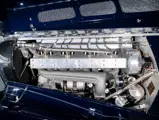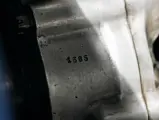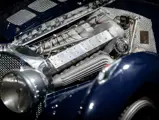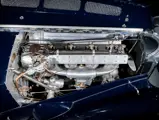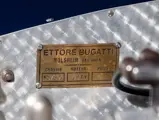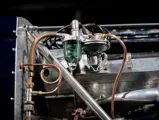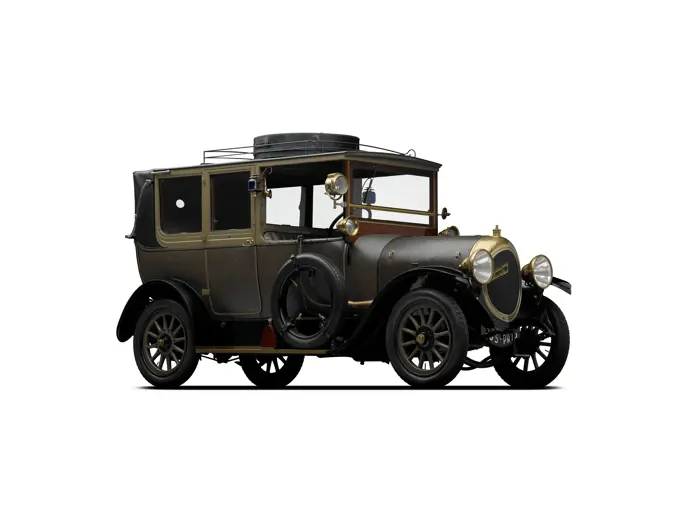
1938 Bugatti Type 57S Roadster in the style of Corsica
{{lr.item.text}}
$1,105,000 USD | Sold
Offered from the Oscar Davis Collection
{{bidding.lot.reserveStatusFormatted}}
- Rare and highly desirable Type 57 Surbaissé chassis now wearing dramatic coachwork inspired by the Col. Gilles 57SC Roadster
- Believed to be one of two 57S examples originally built with Corsica coupe coachwork
- Engine fitted with rare and performance-enhancing Bugatti carburetor
- A striking Bugatti that benefits from known provenance from new
- Accompanied by incomplete spare engine with crankcase stamped “57601 42S”
The Bugatti Type 57 is rightly hailed as one of the great touring cars of the pre-war era, and the already excellent model only grew more sporting when the immortal Molsheim firm introduced the Type 57S. As the “S” in the model designation indicated, these chassis were Surbaissé, or lowered, which further improved handling characteristics—and made for the perfect blank canvas for some of the most alluring coachwork of all time.
This car, chassis number 57601, is one of a scant 43 Type 57S examples believed to have been built. It was first delivered to Bugatti’s Brixton Road agency in London, England, and purchased by Mr. G.D. Pearce-Jones of Oxshott. The famed English coachbuilder Corsica was then contracted to build a closed coupe body for the car; interestingly, when complete, this coupe bore more than a passing resemblance to the ultra-rare and desirable Jean Bugatti-designed Type 57SC Atlantic.
According to research conducted by marque expert David Sewell, the car was registered on 7 June 1938 and would remain under the care of Pearce-Jones through World War II. In 1948, he parted ways with the Bugatti and sold it on to Anthony Clark. Over the next year the car would change hands twice more before reaching Daniel Richmond.
Tragedy would strike in 1952, when a road accident resulted in the chassis being bent. Soon after, 57601 was dismantled and stored for rebuilding at a later date. Unfortunately, the bad luck would continue, and around 1964 the building storing the parts caught fire, causing further damage. With the scope of repair work now greatly increased, Richmond decided to give the remains to Ronnie Symondson, who since 1938 was the owner of another Type 57S and was regarded as one of the foremost 57S engineers at the time. Thanks to his extensive supply of original spare parts, 57601 could be repaired.
The bent chassis was straightened and a new front crossmember supplied from the factory replaced the original damaged component. During the rebuild of chassis 57601, Symondson utilized a correct-type crankcase, stamped 3S, from a separate Type 57S then under his ownership, chassis 57375. An unused factory cylinder block was fitted atop the case, with a Le Mans-type crankshaft now inside. Additionally, a more modern coil ignition was installed, along with Hepolite pistons providing a 9:1 compression ratio. All-new timing gears, engine mountings, transmission gears, and shafts were used to complete the build.
Finally, and distinctively, a rare Bugatti carburetor replaced the original Stromberg units. This seldom-seen feature is understood to extract balanced performance from the car’s 3.3-liter dual-overhead cam inline-eight engine, and also serves as an intriguing alternative to the more common supercharger upgrade.
With little of the original Corsica coachwork left to repair, Symondson commissioned Wakefields & Sons of Byfleet, Surrey to construct a body with styling contemporary to the late 1960s. Under the skin, the Bugatti received hydraulic brakes, a 3.66 rear axle ratio, and a replacement radiator. The rebuilt vehicle, albeit without paint, made its debut at the Bugatti Owners Club race meeting at Thruxton on 27 October 1968.
In 1972 Symondson parted ways with 57601 and the car came into the hands of A.J. McAlpine; over the next decade, the vehicle rarely attended or made public appearances. After being purchased by Brian Classic in 1984, it was decided that the new coachwork should be built for the Type 57S, and Jack Buddey was hired to build the Col. Gilles Corsica Roadster-inspired coachwork now seen on the car today. Certain liberties were taken with the design to differentiate the two vehicles; chassis 57601’s present body features a tail and fenders akin to the Gangloff style, giving it a unique and irresistible visual character.
In 1998, Oscar Davis purchased the Bugatti, and it has been part of his collection ever since. Davis, always keen to bolster the provenance of his vehicles, would eventually track down and acquire an incomplete spare engine for the car; importantly, its crankcase bears the markings “57601 42S”—indicating that this is the numbers-matching unit. It accompanies the car today.
With storied provenance, attractive coachwork, and a high-performance engine fitted with a rare Bugatti carburetor, this Bugatti Type 57S fulfills every requirement of an undeniable motoring classic.
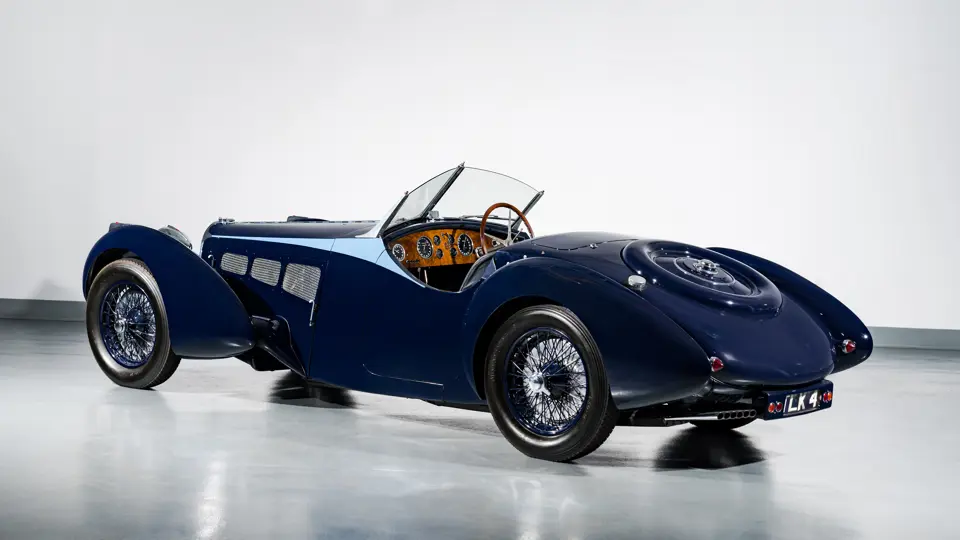



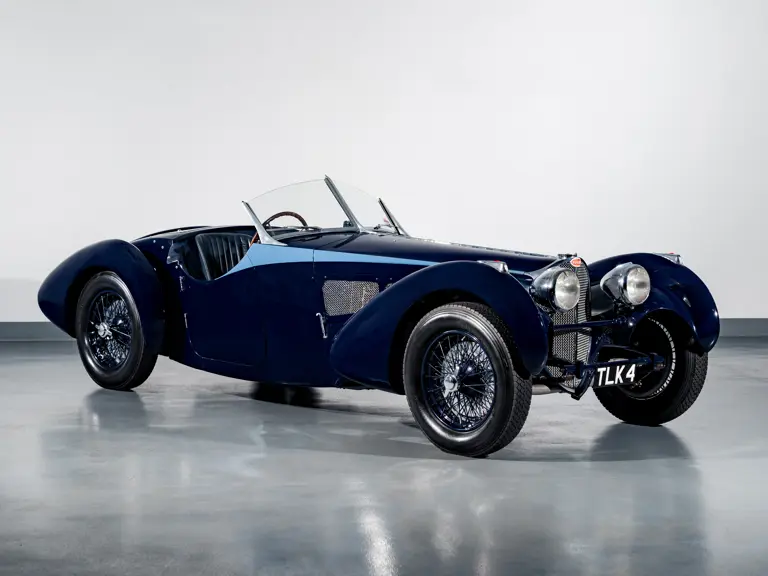
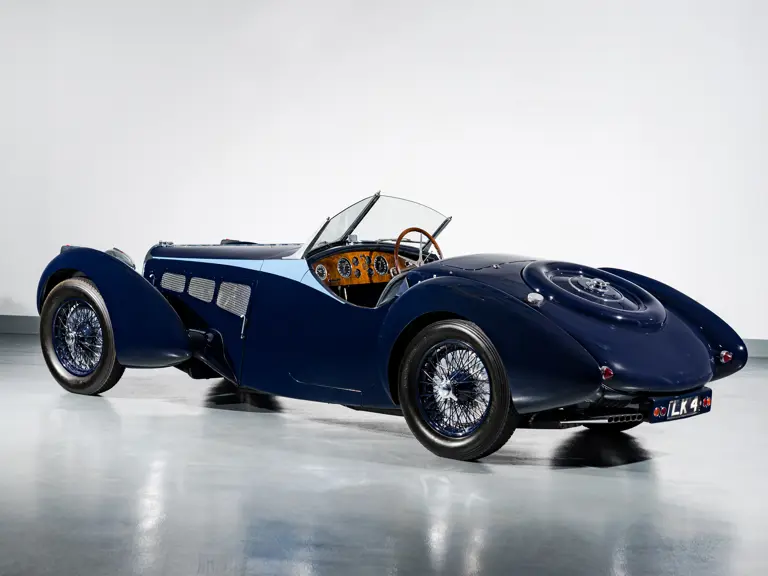
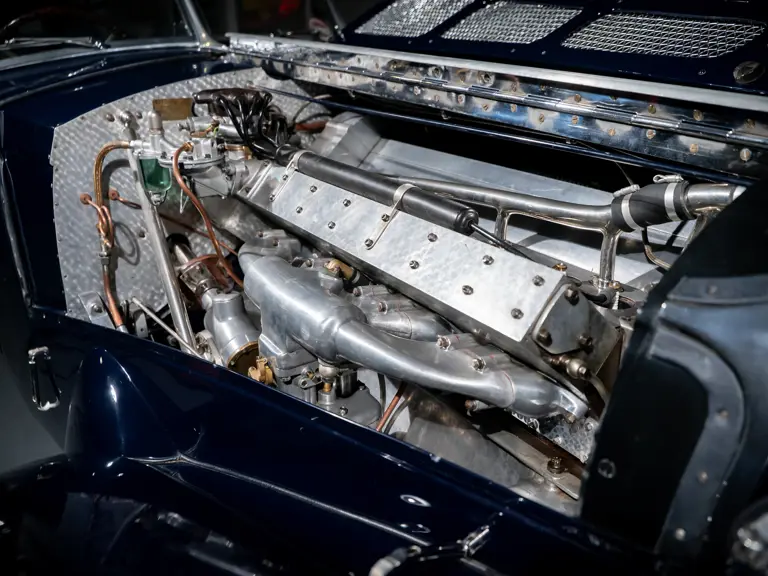
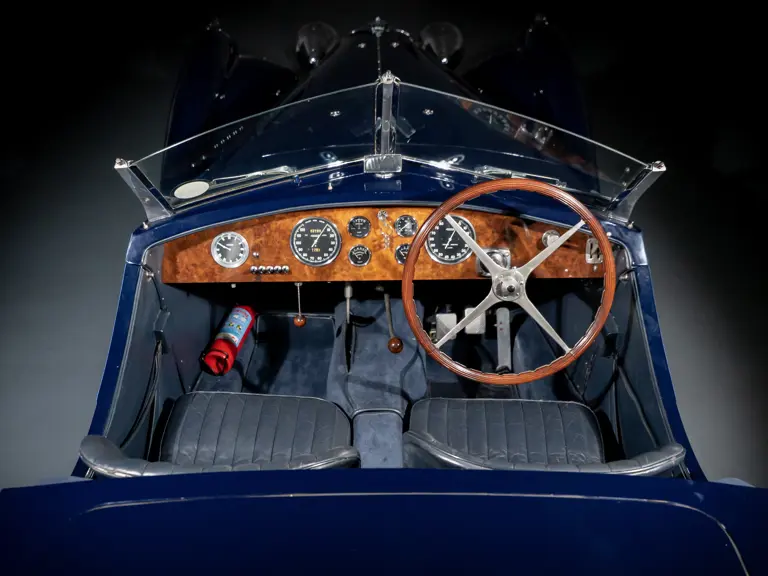
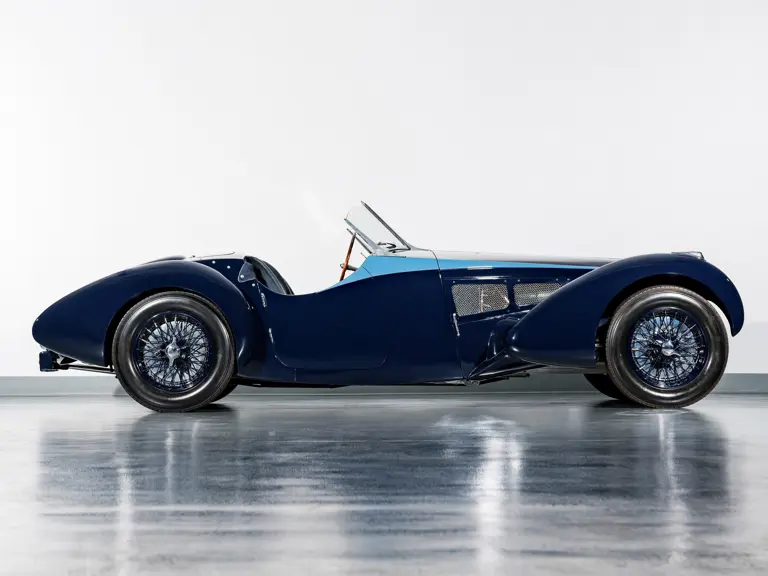
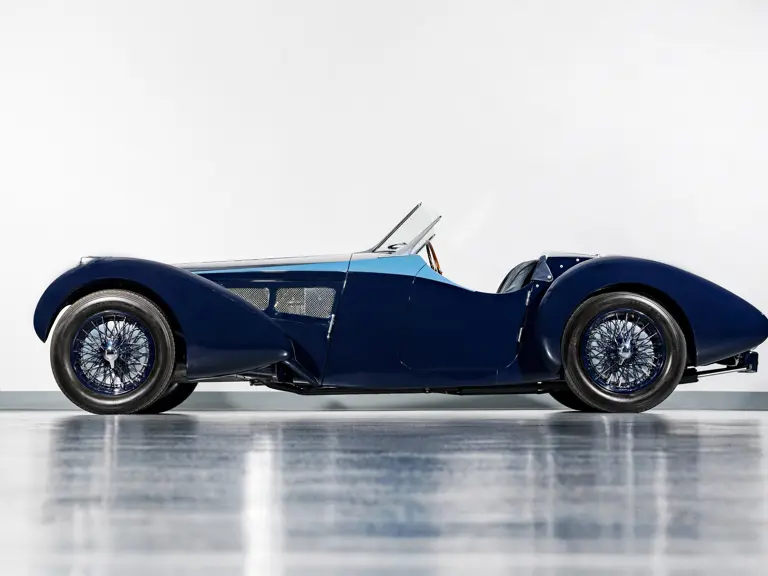
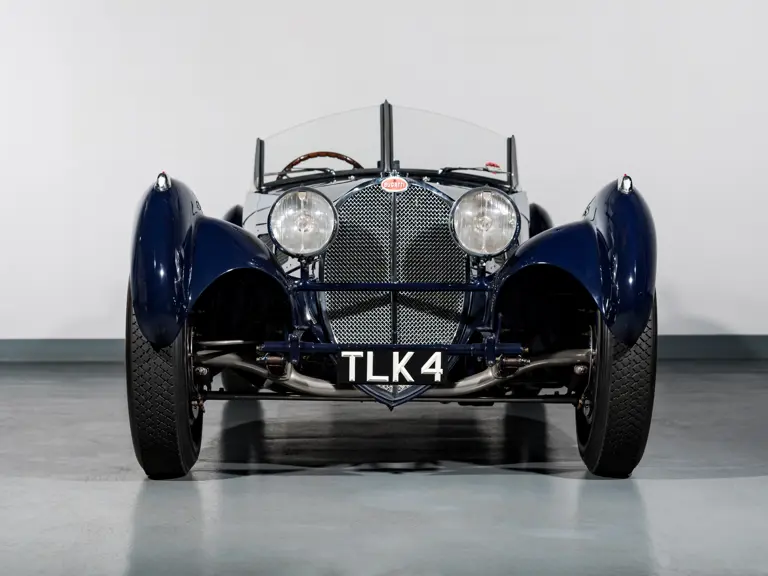

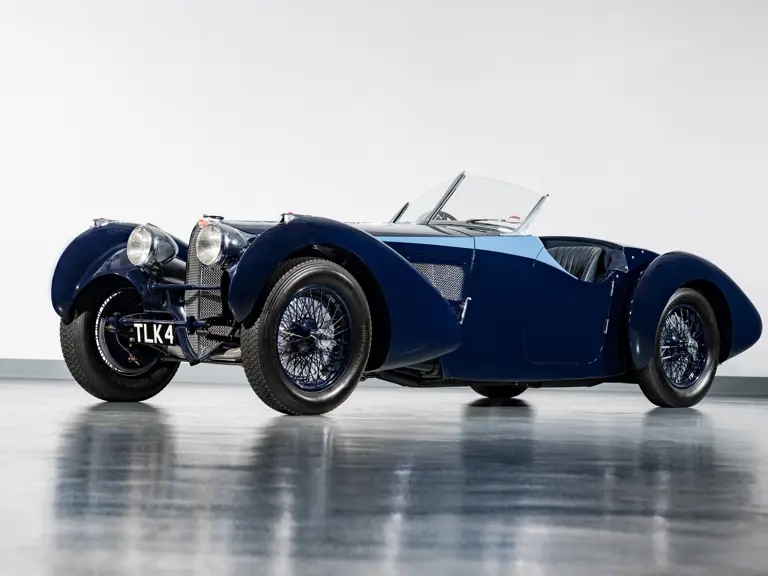
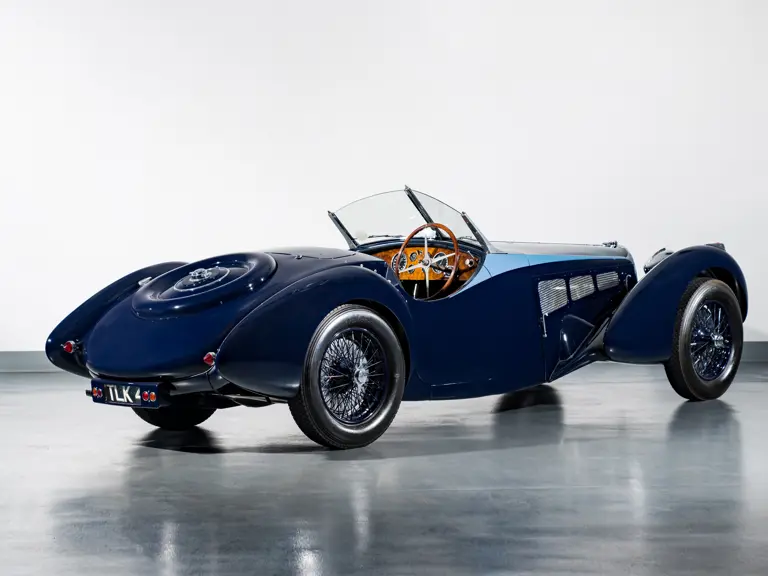
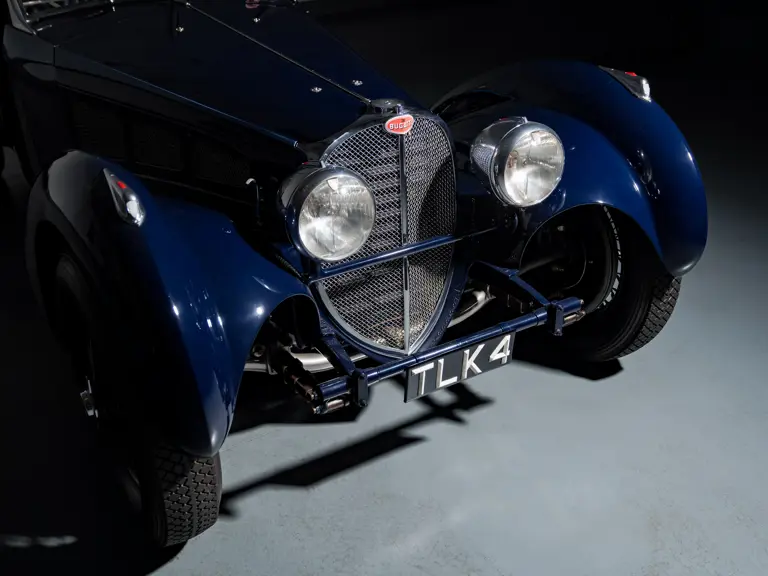
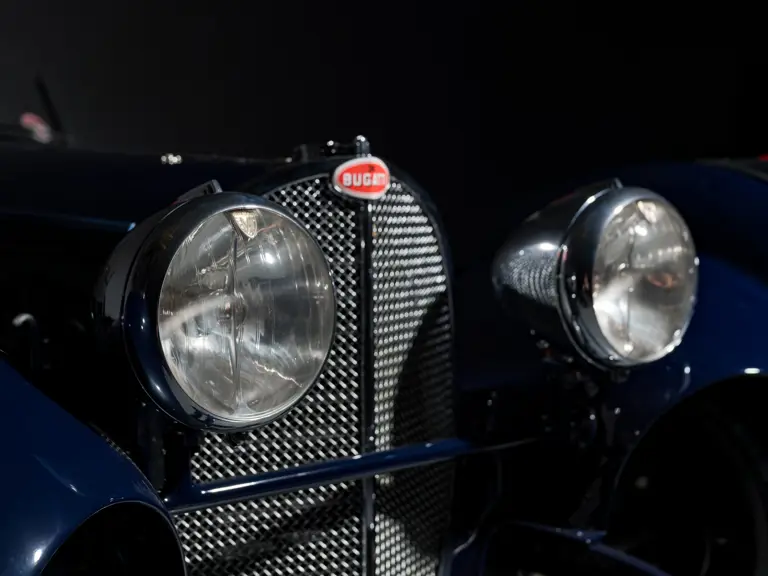
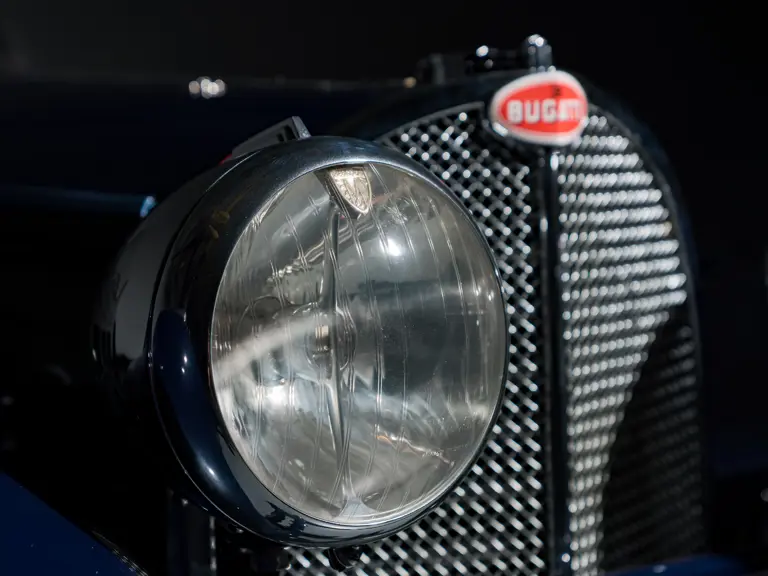

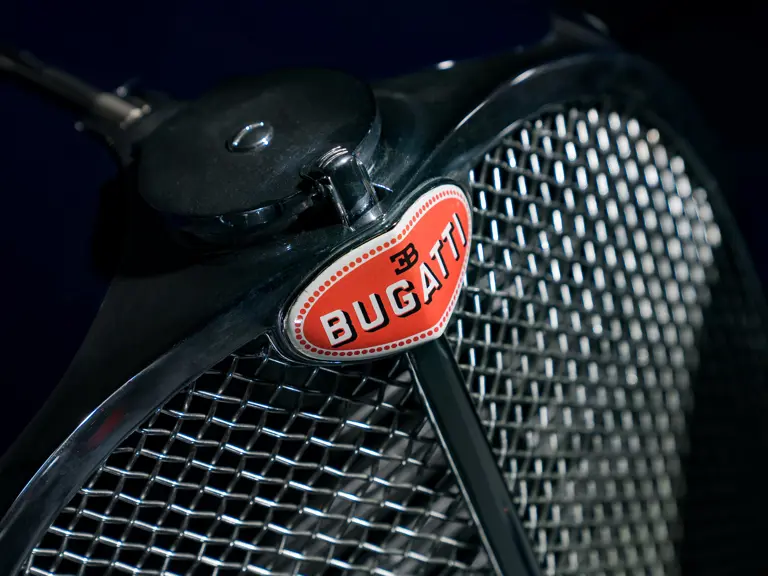
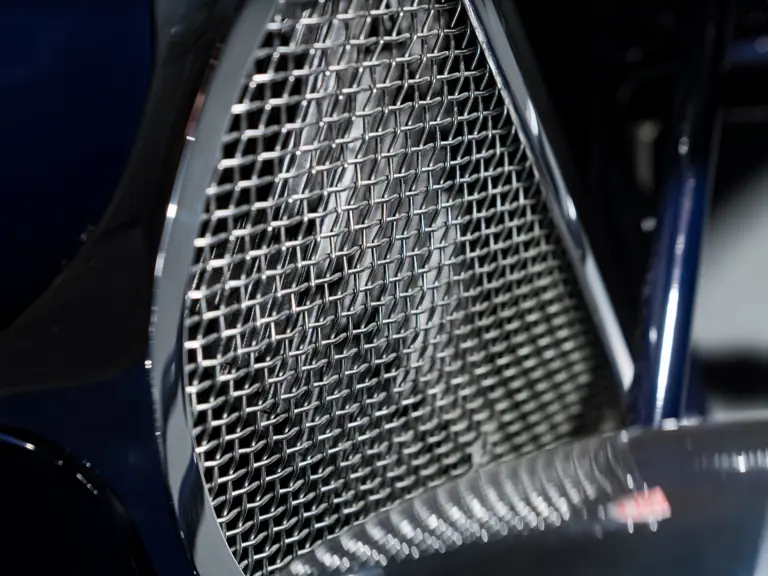
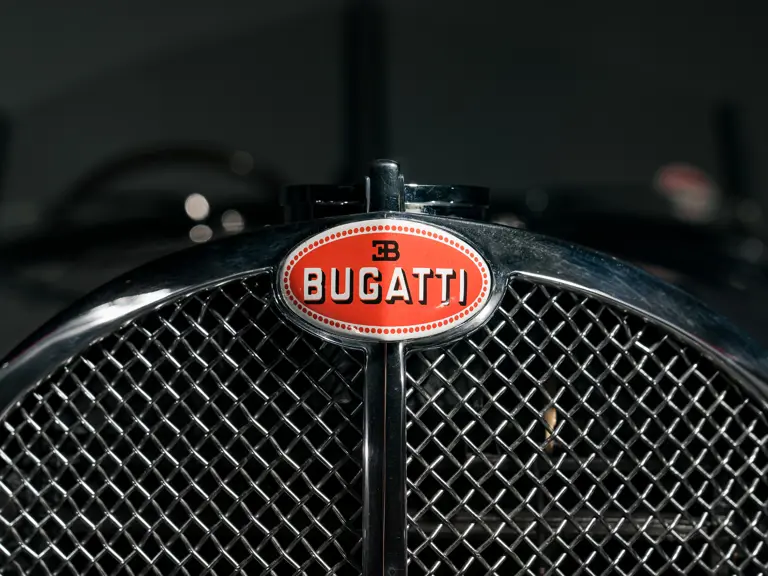
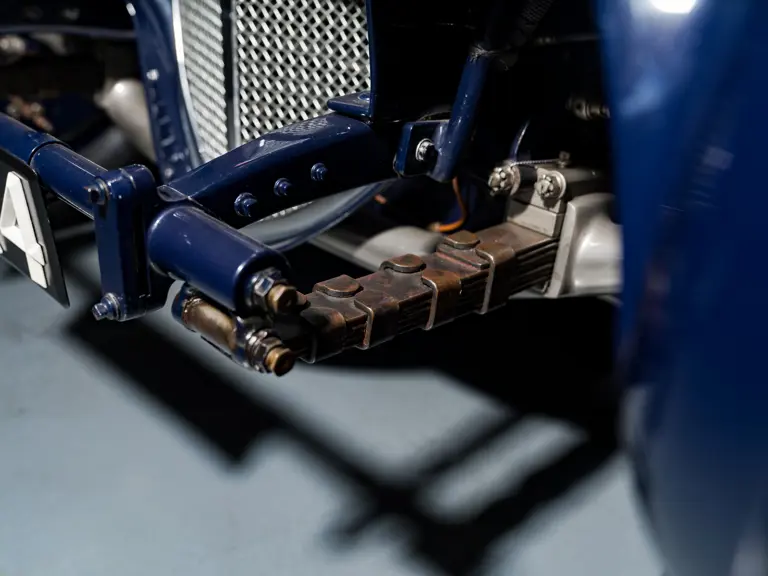
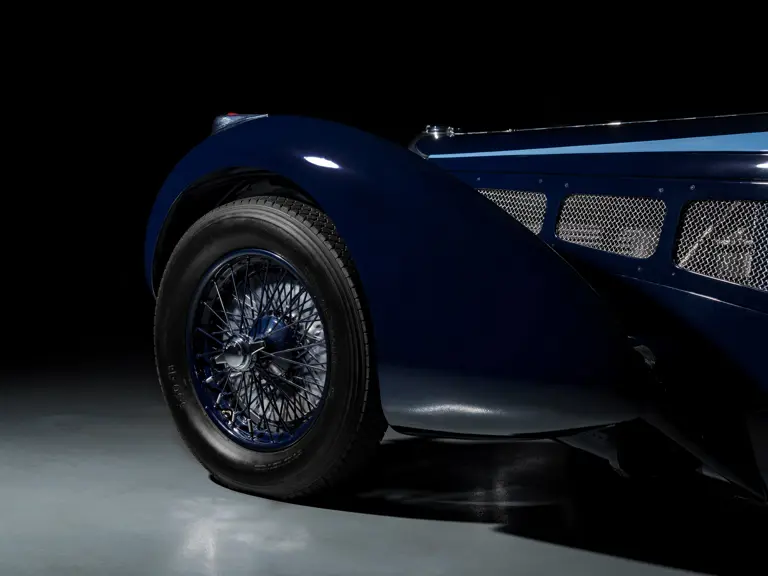
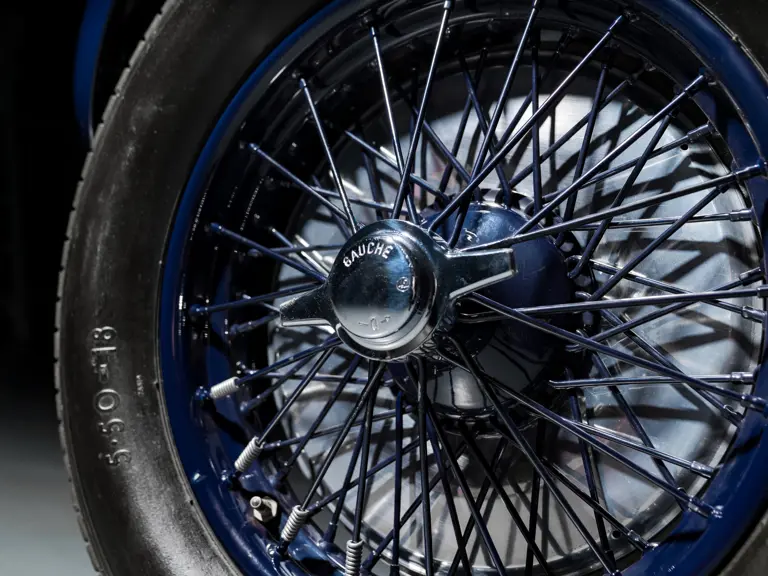

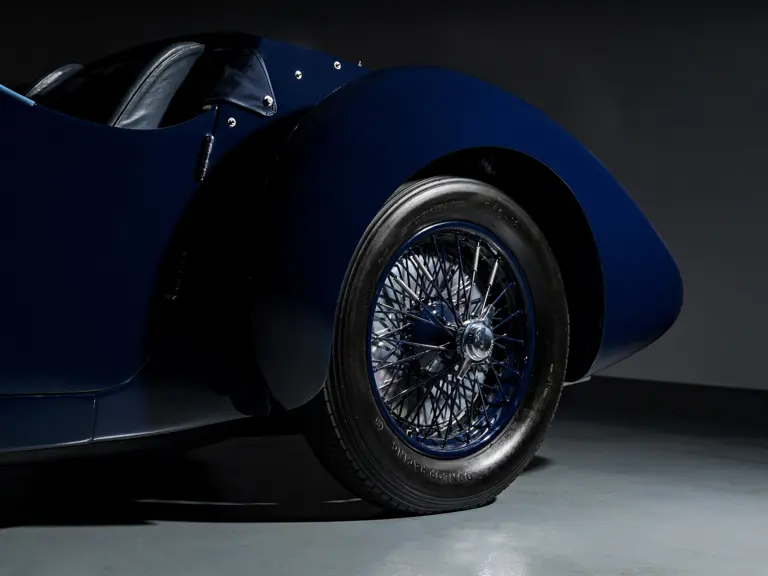


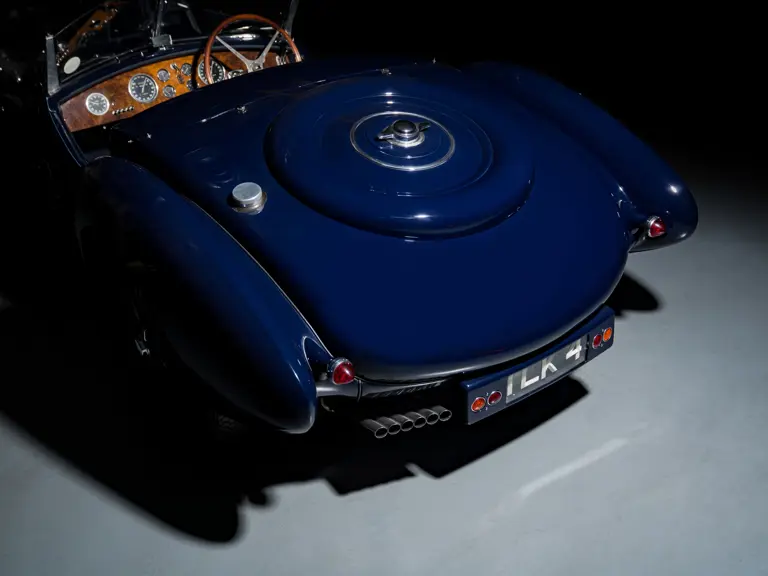


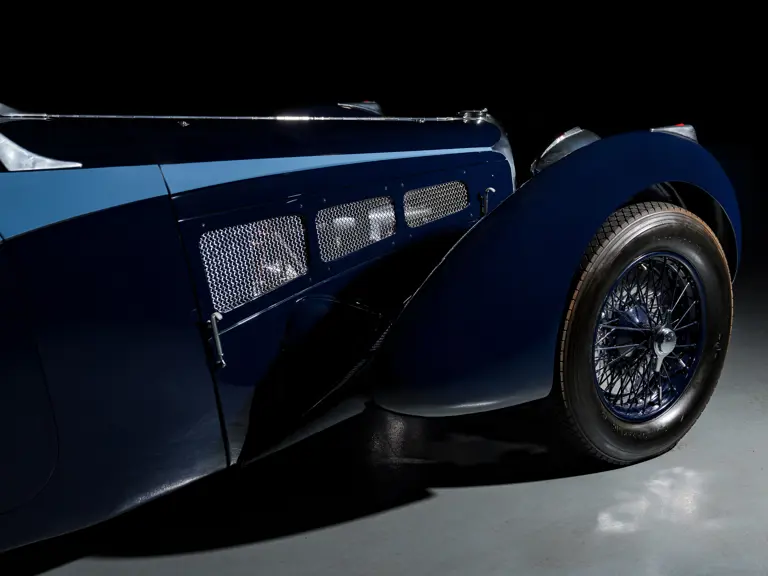
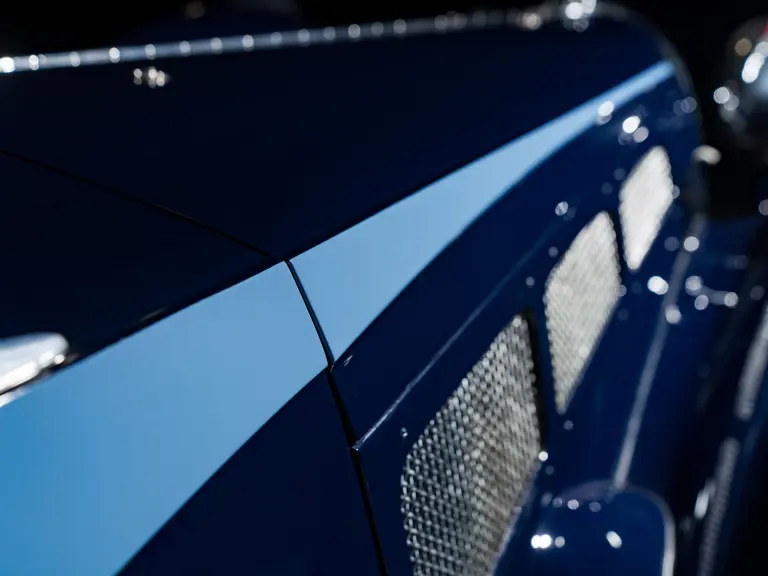
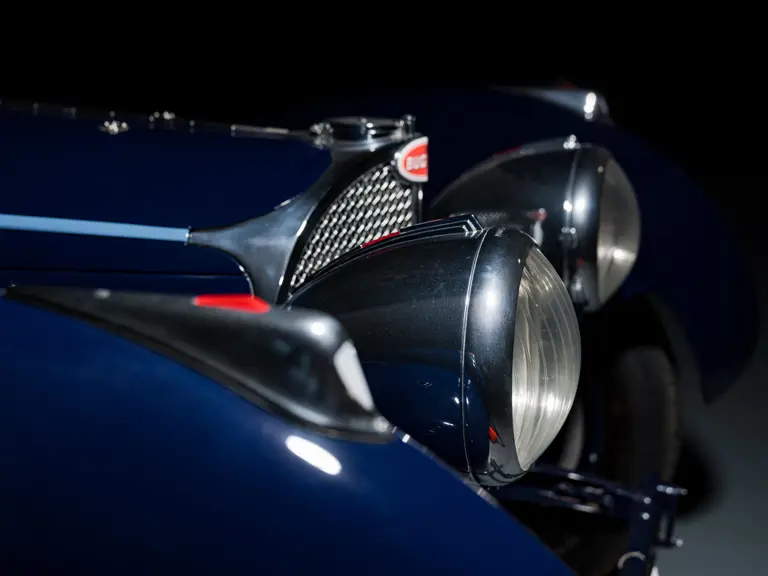

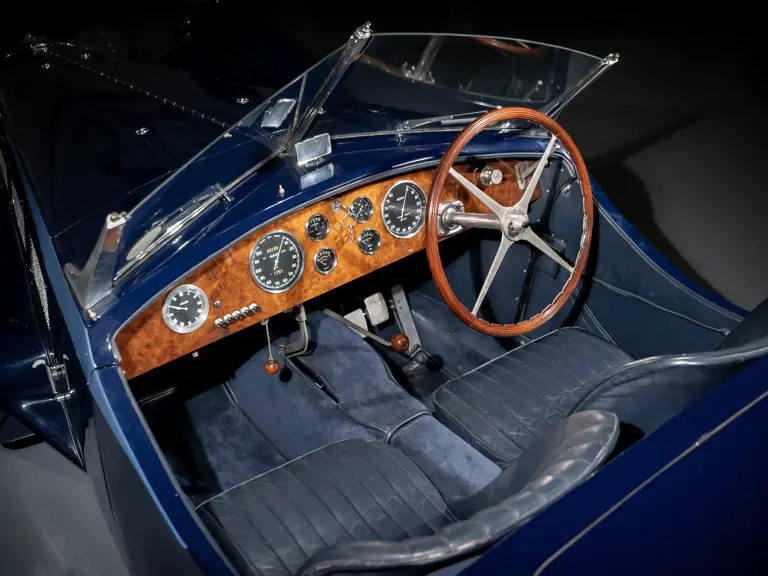
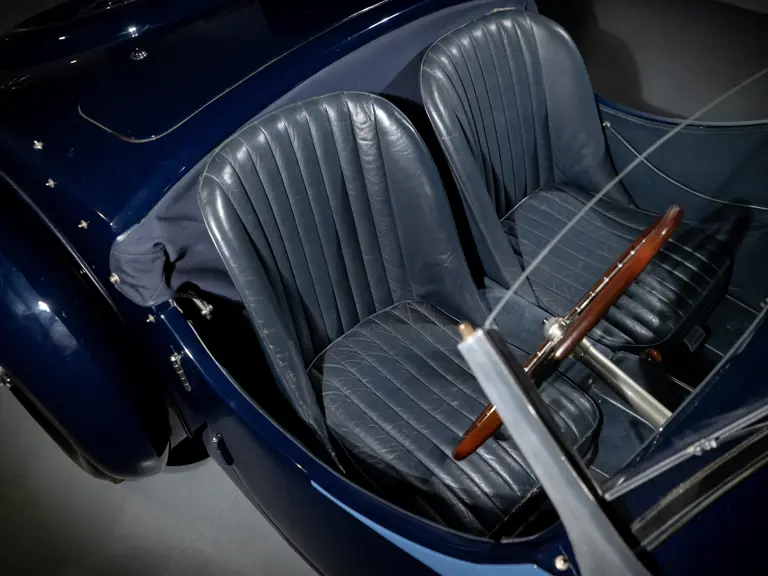

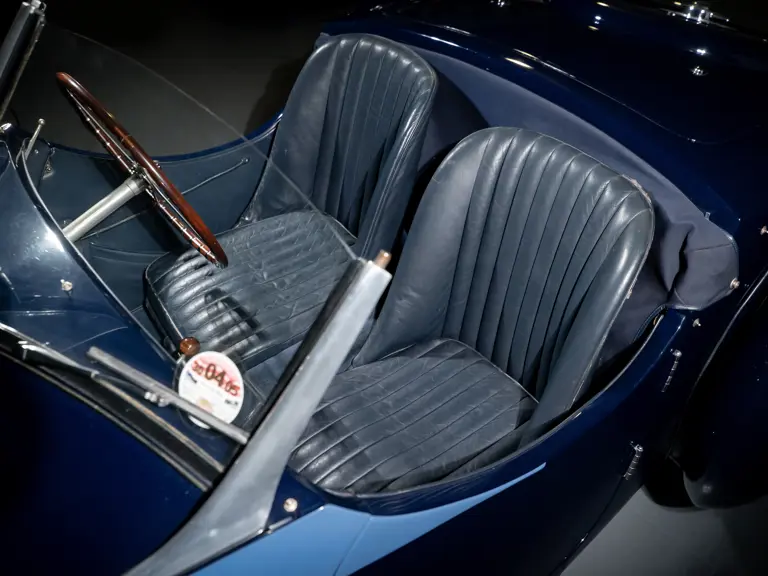
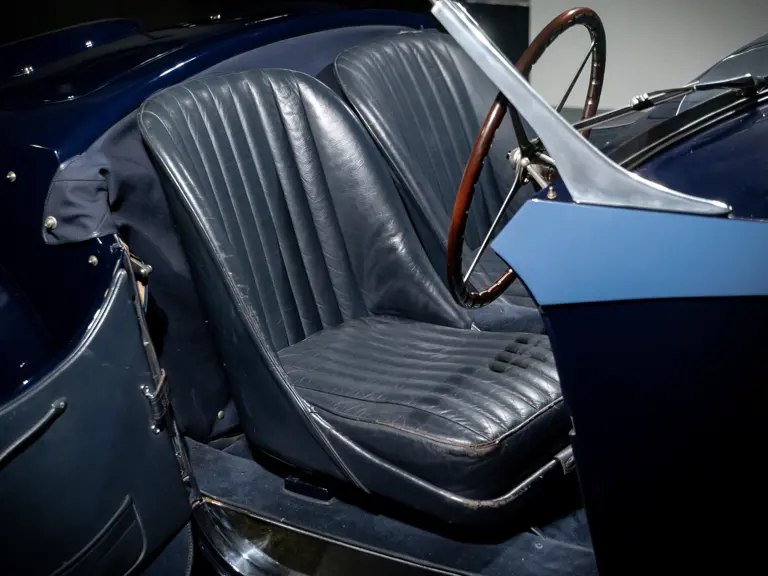
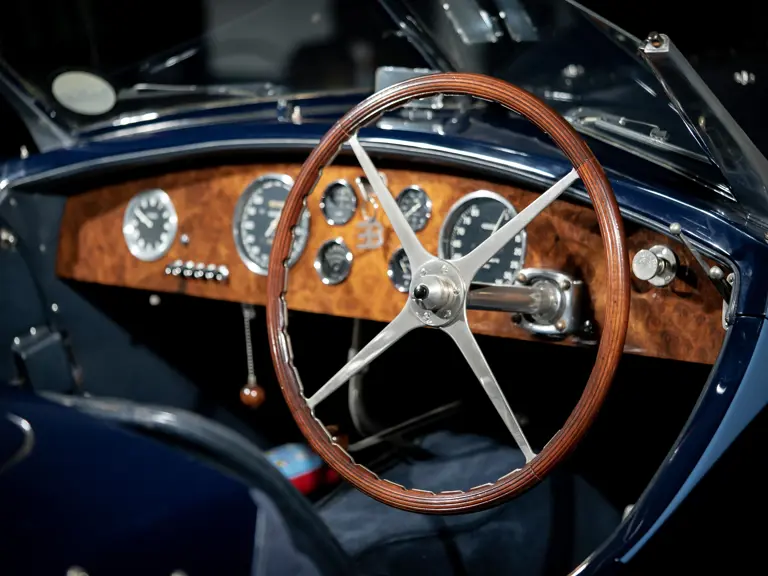
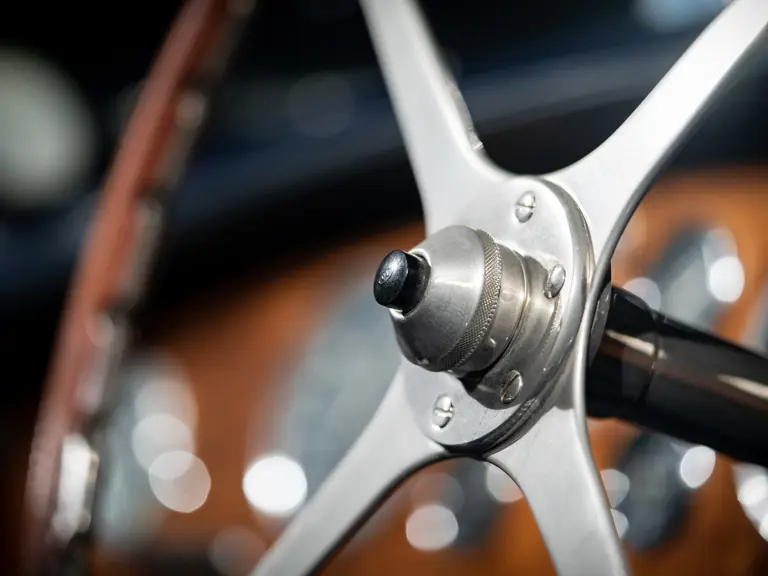
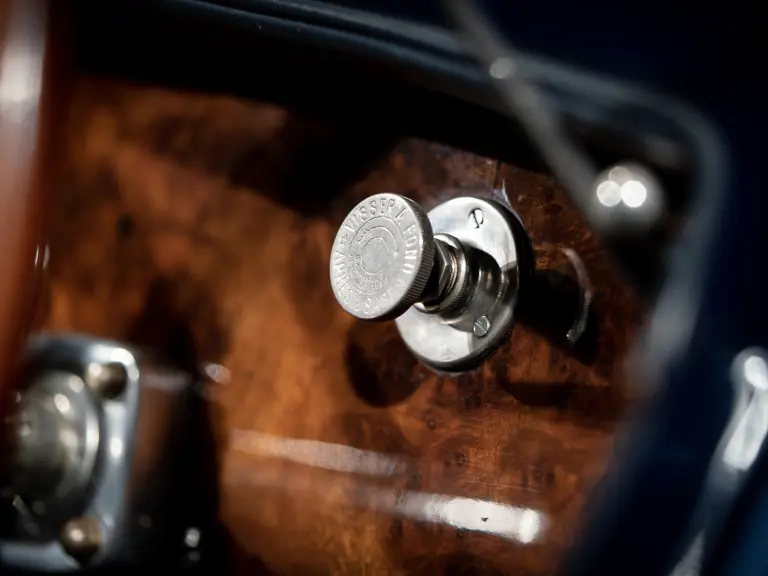

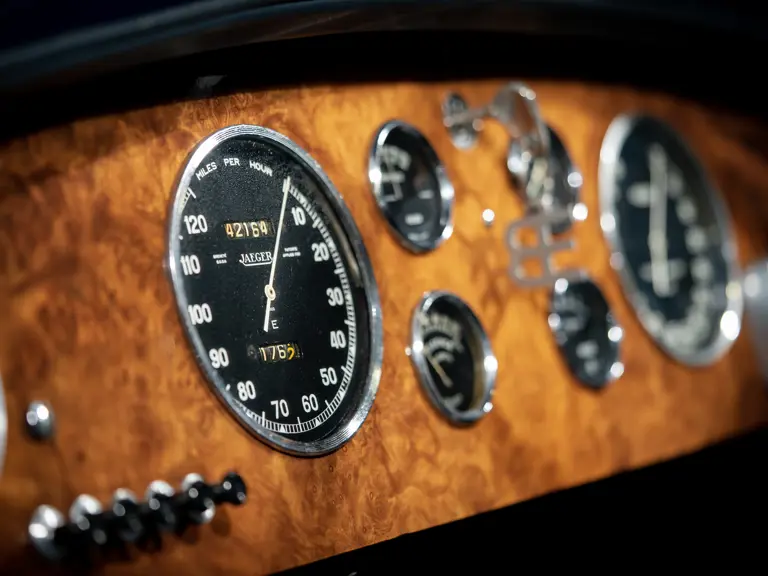
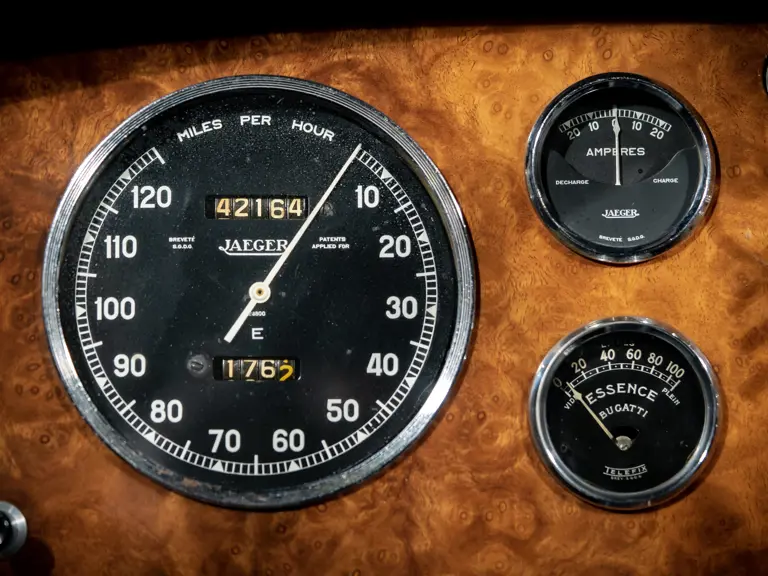
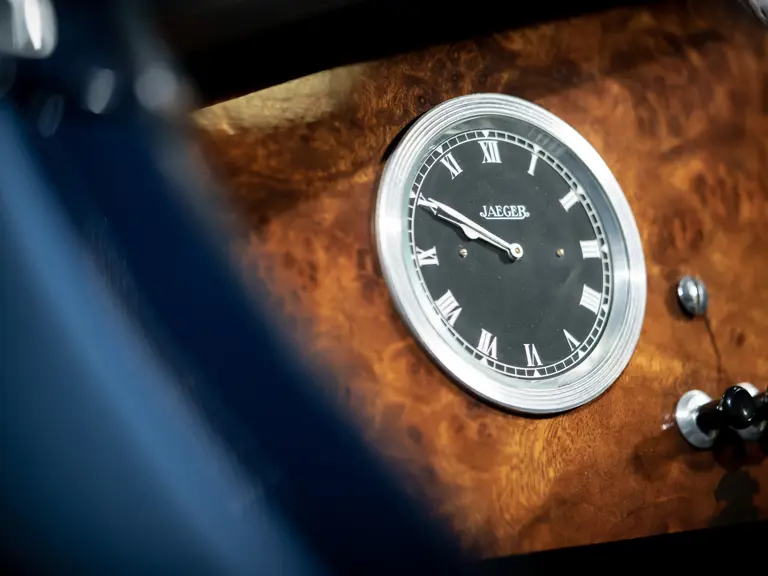
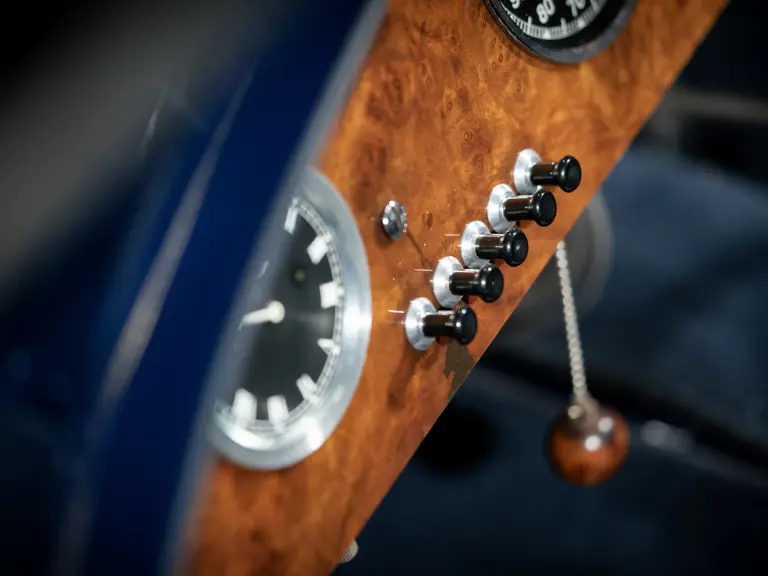
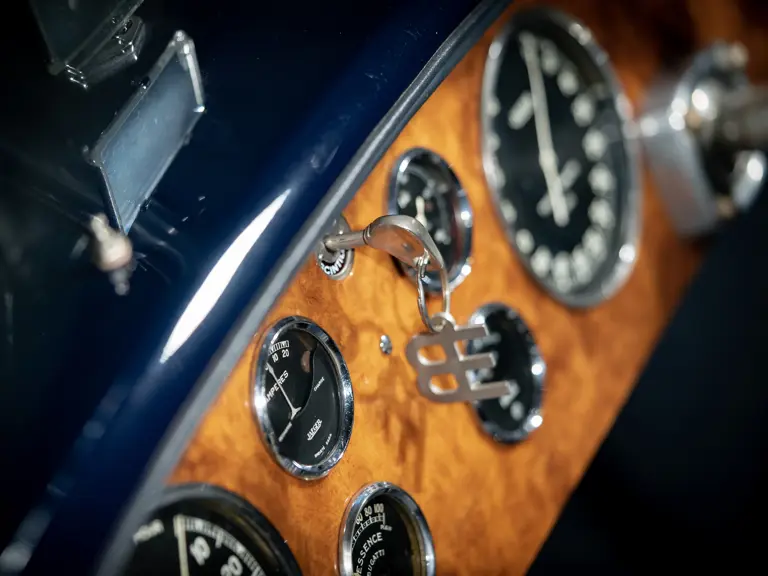
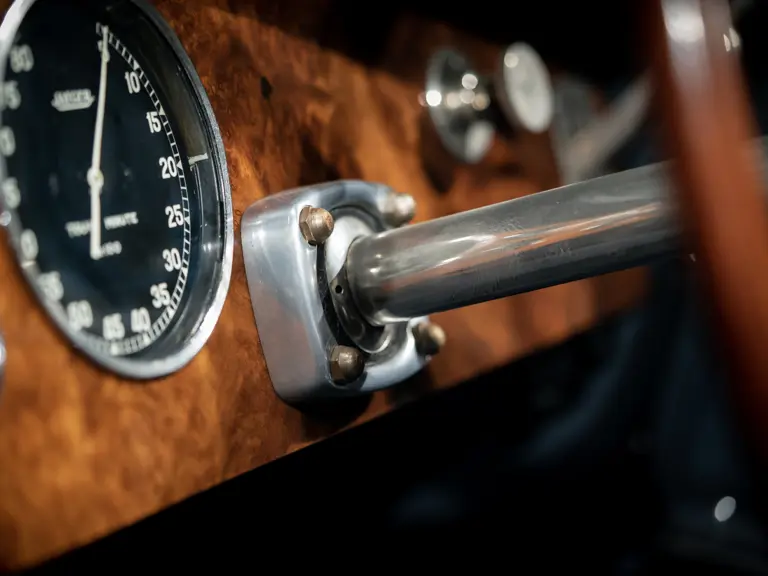
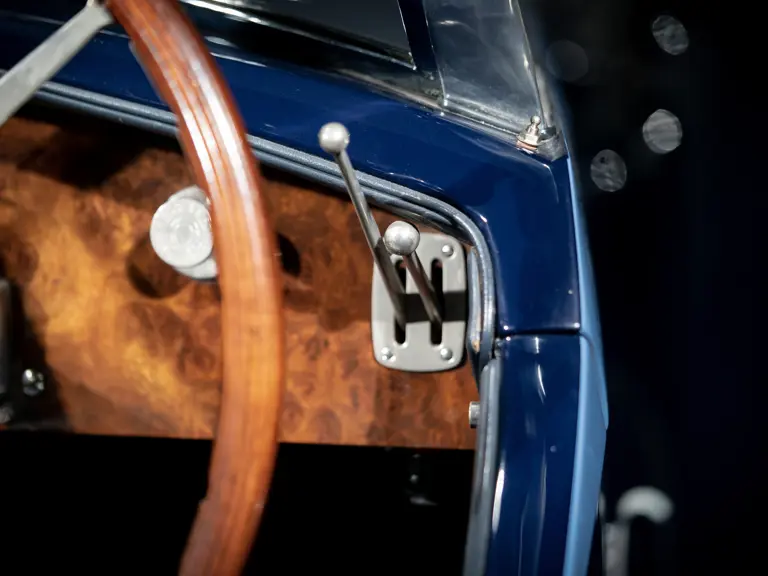
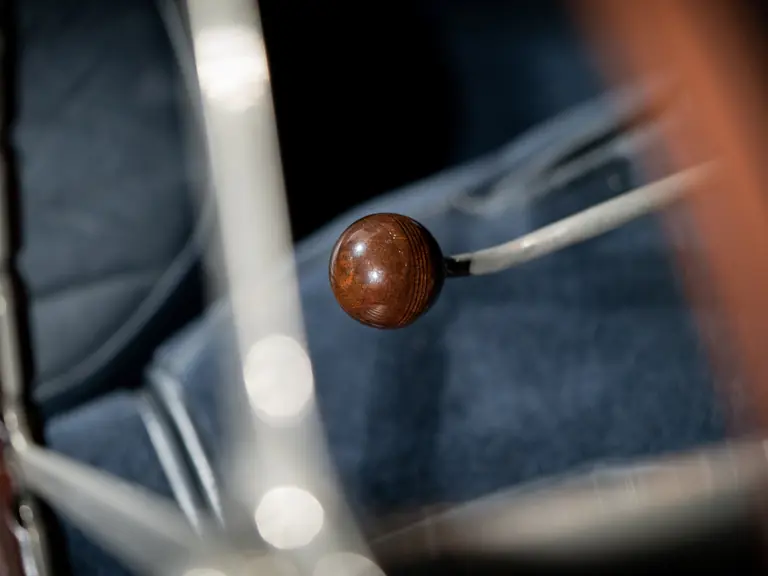
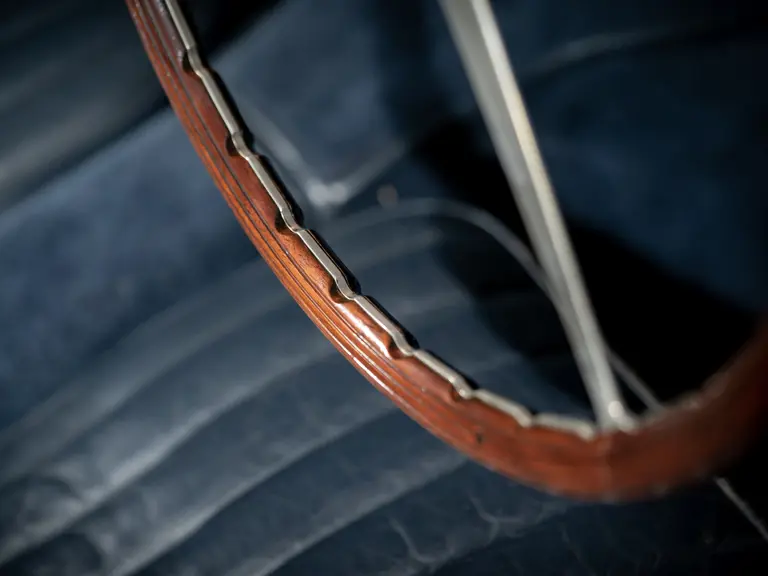

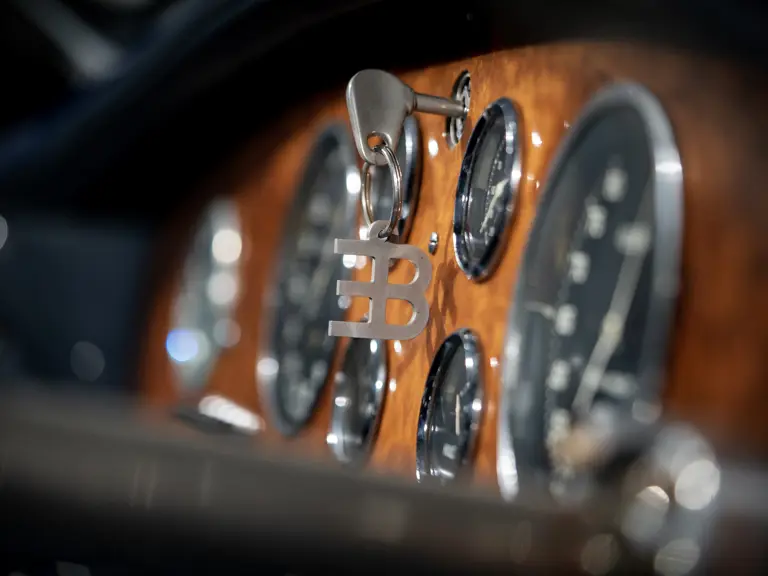
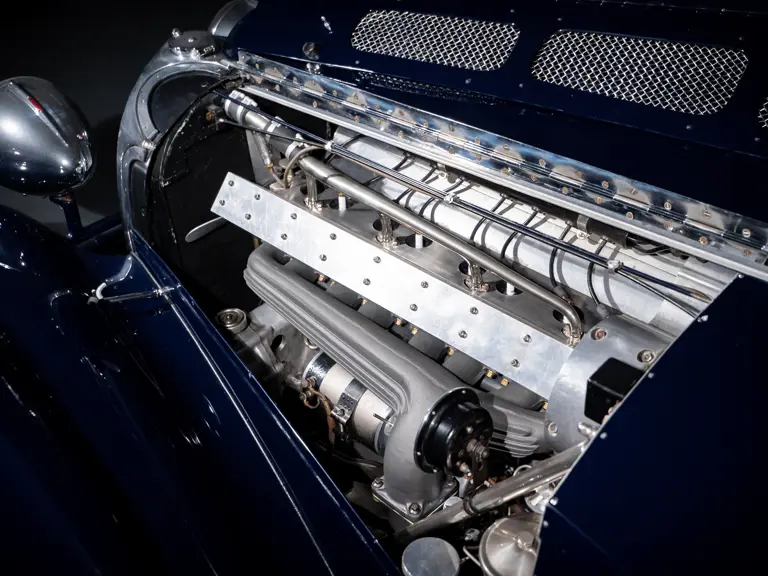

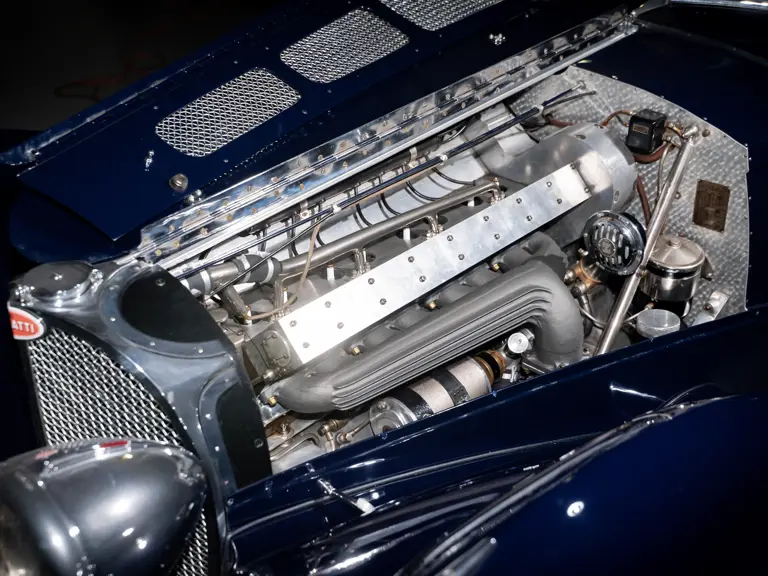
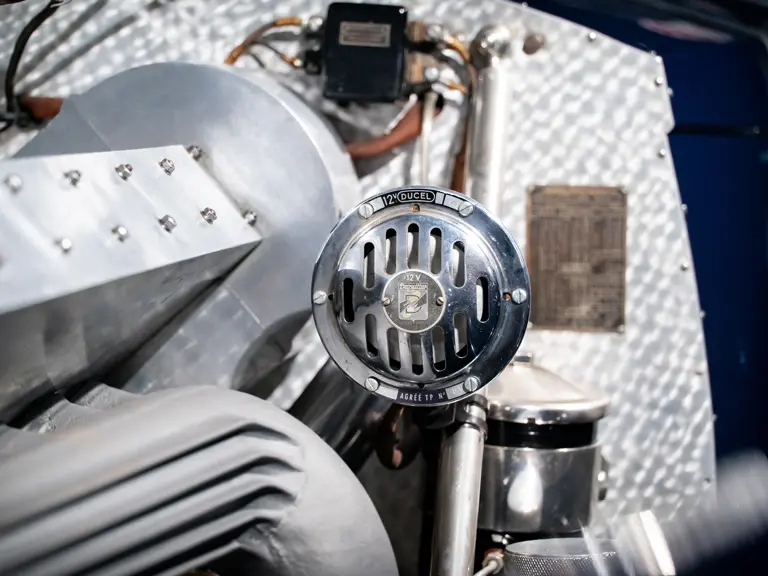
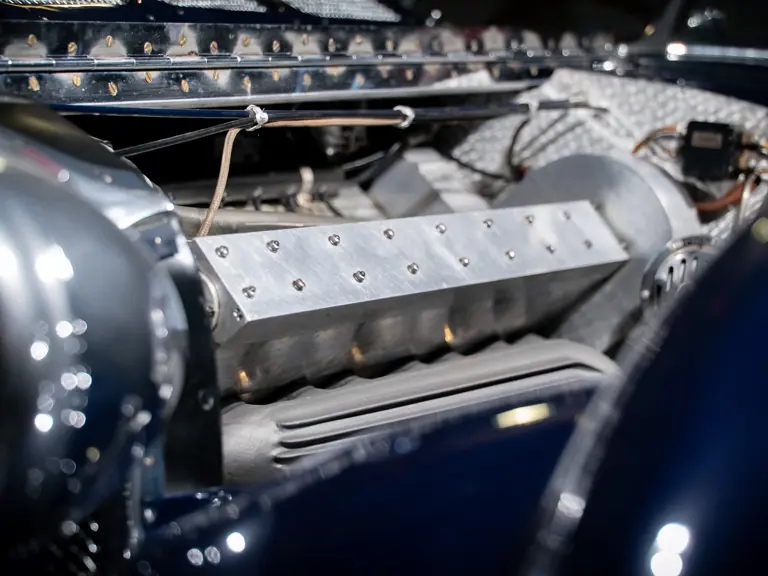
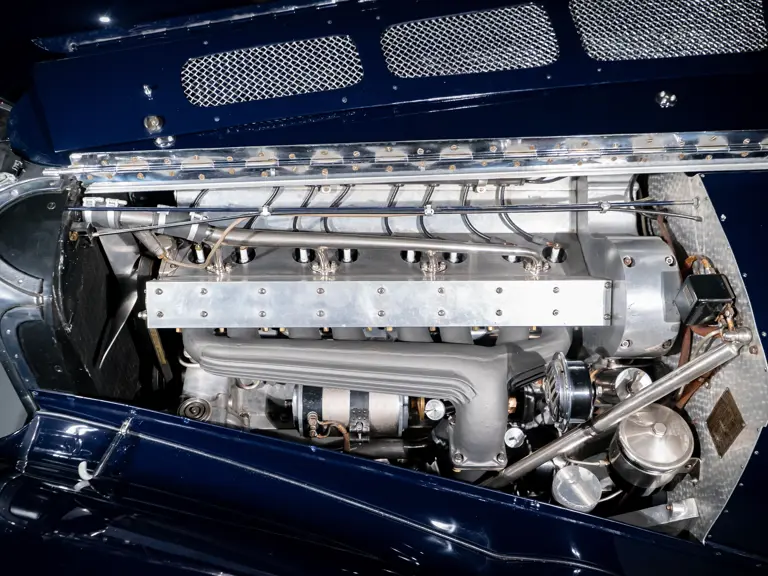
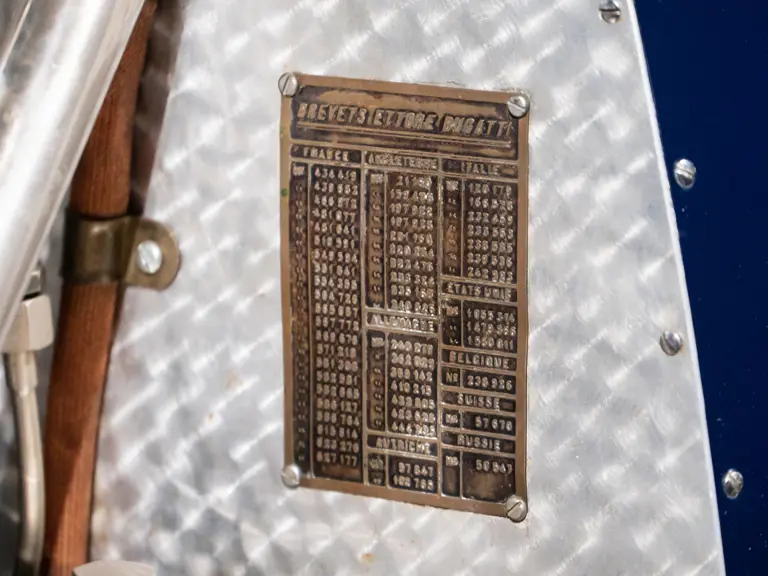
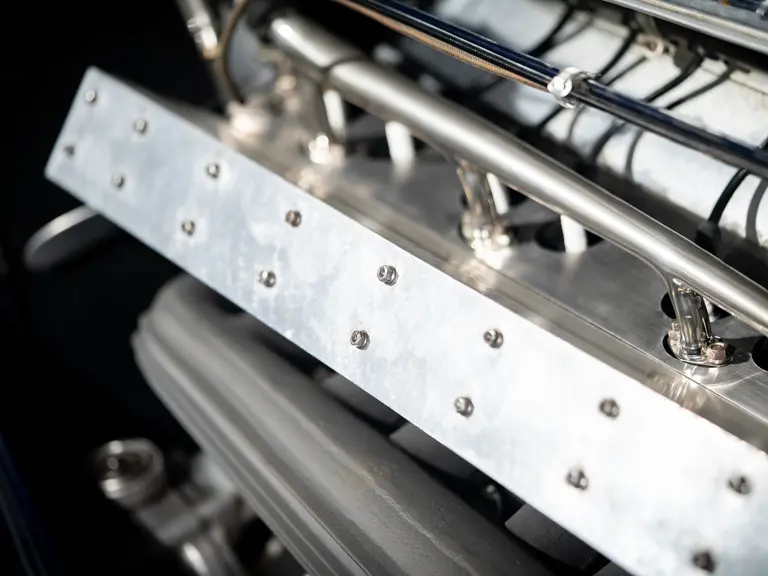
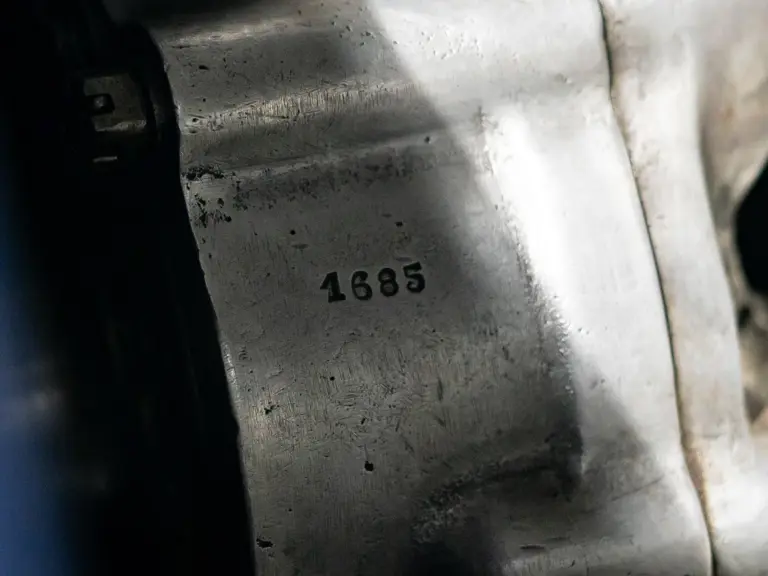
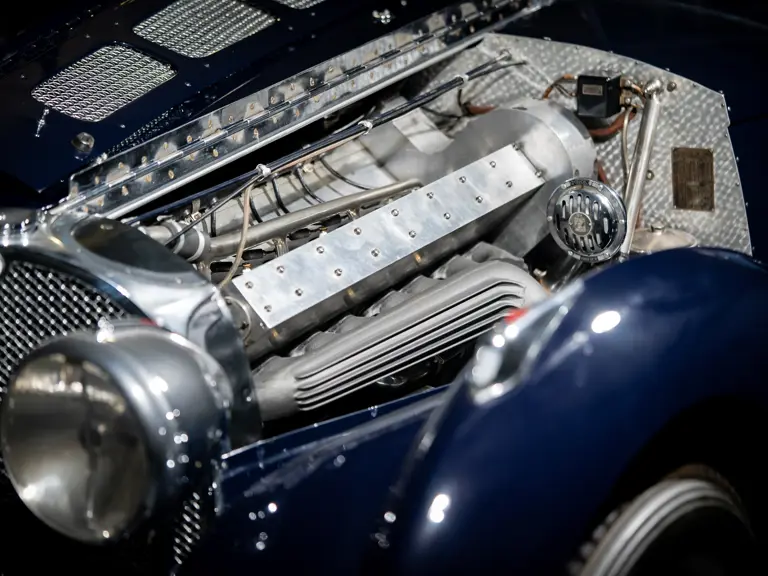
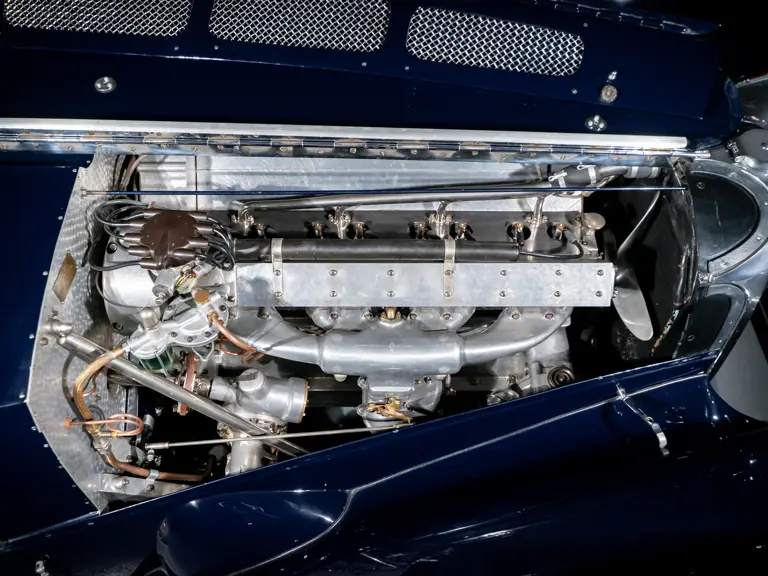
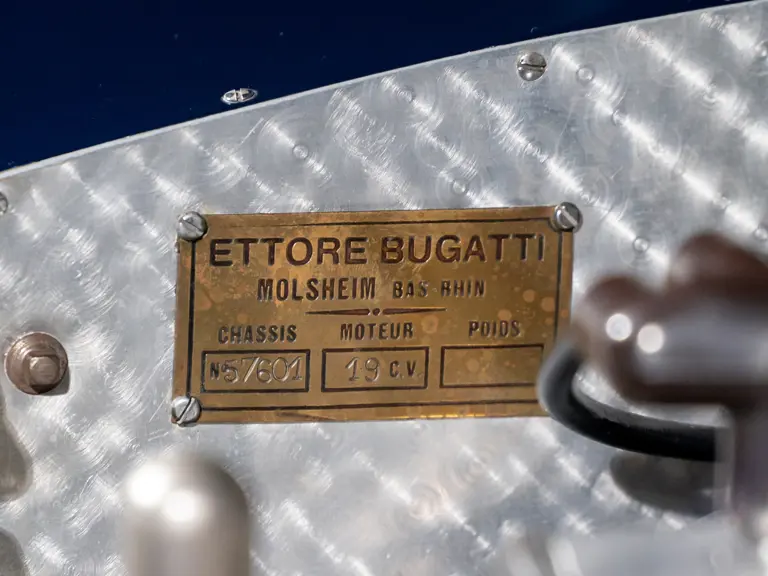
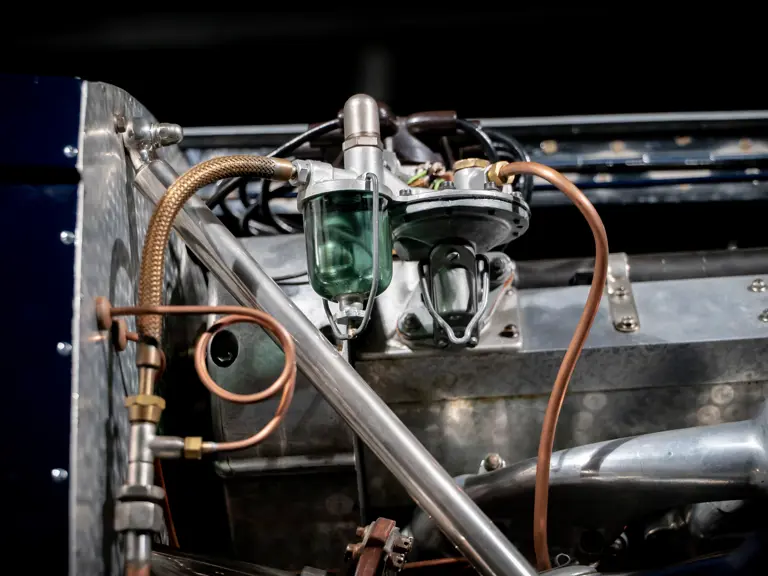
 | Monterey, California
| Monterey, California
